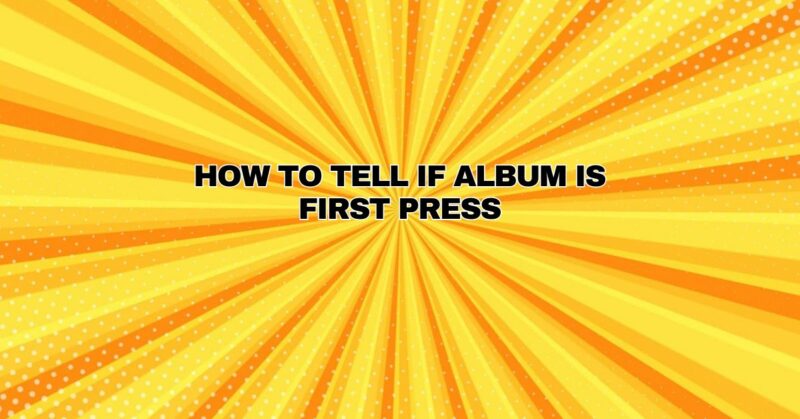Vinyl records are not just about the music they contain; they also tell a story through their production history. For collectors and enthusiasts, identifying a first press of an album is like uncovering a hidden treasure. A first pressing often holds historical and sonic significance, making it a sought-after item in the vinyl world. In this comprehensive guide, we’ll delve into the art of determining whether an album is a first press.
1. Research the Album:
Before diving into the details of the physical record, start by researching the album itself. Look for information about the album’s release history, variations, and notable details. Online music databases, collector forums, and reference books dedicated to vinyl records can provide valuable insights. Knowing the album’s release history and potential variations is crucial for identification.
2. Examine the Cover:
The album cover can offer clues about its pressing history. Pay attention to the following elements:
- Catalog Number: Check the catalog number on the cover. A first pressing may have a unique catalog number compared to later releases or reissues.
- Label Information: Examine the label on the cover for any unusual details or variations. Different label designs, logos, or typography can indicate a first press.
- Barcodes: Look for barcodes on the cover. Barcodes became more common on album covers in the late 1970s and early 1980s. The absence of a barcode can suggest an older pressing.
- Printing Quality: Observe the overall print quality of the cover. Early pressings often had different printing techniques and paper quality.
3. Inspect the Vinyl Record:
Once you have a good understanding of the album’s history, it’s time to inspect the physical record itself. Here’s what to look for:
- Runout Groove Etchings: The runout groove area near the center label of the vinyl often contains etched or stamped codes. These codes can reveal information about the pressing plant, mastering engineer, and version of the record. Research these codes to identify the pressing.
- Label Design: Examine the record labels themselves. First pressings may have unique label designs, colors, or logos compared to later releases.
- Vinyl Color and Weight: Pay attention to the color and weight of the vinyl. Early records were typically black, but colored vinyl or special editions may have different hues. Heavier vinyl (e.g., 180 grams or more) became more common in later pressings.
- Matrix Numbers: The matrix or catalog numbers etched into the vinyl’s runout groove can provide vital information. Research these numbers to identify the pressing.
4. Check for Inserts and Extras:
First pressings sometimes include inserts, posters, lyric sheets, or other extras that later editions may lack. These items can be valuable indicators of an album’s original release.
5. Compare to Known First Pressings:
Comparing your record to known first pressings can be an effective method. Collector forums, websites, and reference books often provide detailed information about identifying first pressings. If you have access to a known first pressing of the same album, compare the details to see if they match.
6. Seek Expert Advice:
If you’re uncertain about whether your album is a first press, consider seeking advice from experienced collectors, record store owners, or vinyl enthusiast communities. They can often provide valuable insights and help you make an accurate determination.
7. Verify with Discogs and Other Online Resources:
Websites like Discogs are valuable resources for identifying and cataloging vinyl records. You can search for your album and check its release history, catalog numbers, and pressing details. Discogs often includes user-contributed photos and information about specific pressings, helping you confirm if your record is a first press.
Conclusion: The Thrill of Discovering First Pressings
Identifying a first pressing of your favorite album can be a thrilling experience for vinyl collectors and music enthusiasts. These records often hold historical significance and may offer superior sound quality compared to later releases or reissues. While the process of determining if an album is a first press can be detailed and nuanced, the reward of uncovering a rare gem is well worth the effort. Remember that collecting vinyl is not just about the value of the record but also about the joy of preserving music history and enjoying the rich, analog sound of vinyl records.

